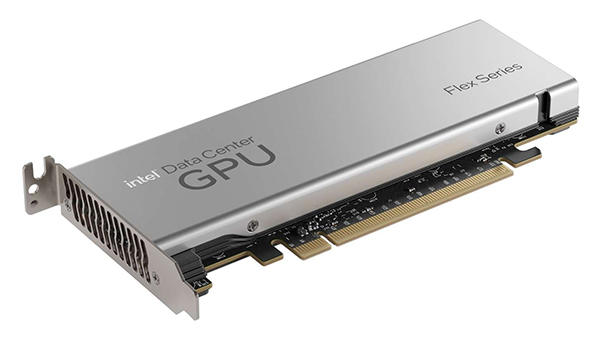Intel Flex (Arctic Sound-M), a new series of GPUs for the world of data centers
The entrance of Intel in the sector of GPU dedicated does not only concern gaming but also other areas, such as that of datacenter. In the past few hours, the US company announced the debut of the series solutions Flexproposals that until now we knew with the code name Arctic Sound-M. These solutions, like the Arc gaming proposals, are also based on architecture HPG.
The Intel Flex series is aimed at those companies that operate in the cloud and more particularly in the distribution of multimedia content, cloud gaming, artificial intelligence, metaverse and other emerging use cases in the so-called “visual cloud”. This is a rapidly growing market segment, so much so that according to some estimates the GPUs dedicated to this area will reach a turnover of 15 billion dollars by 2026.
“We are in the middle of explosive pixel growth driven by a growing number of consumers and applicationsas well as from higher resolutions. Today’s datacenter infrastructure is under great pressure to process, encode, decode, move, store and display visual information. The Intel Flex Series GPU is a revolutionary design that uniquely addresses today’s demand for computing power by providing flexibility and scalability for tomorrow’s immersive experiences, ”said Jeff McVeigh, vice president and general manager of Intel’s Super Compute Group.
The flagship of Intel Flex GPUs is theAV1 encoder integrated directly into the hardwarewithout forgetting at the same time oneAPI-enabled open-source software stack which frees developers from the economic and technical burdens of proprietary programming models (who said CUDA?) and guarantees broad support for the latest multimedia tools, APIs, frameworks and codecs.
Intel Flex datacenter GPUs will initially offer media processing and distribution and cloud gaming on Android. There are two products announced, Flex 140 e Flex 170, both characterized by a passive cooling system. The first solution is a small card, with 2 GPUs on board and a TDP of 75W.
The two onboard ACM-G11 GPUs have respectively 8 Xe-cores, for a total of 16, along with 4 Xe Media Engine (two per GPU). There is no lack of support for ray tracing, while the peak power with FP32 calculations touches 8 TFLOPs (105 TOPs in INT8). The GPUs are supported by 6GB of GDDR6 memory each, for a total of 12GB.
Flex 170instead, it is based on a sola GPU ACM-G10 con 32 Xe-core and 2 Xe Media Enginewhile they are on board 16GB of GDDR6 memory. The TDP reaches i 150W. The board, according to Intel, achieves a computing power of 16 TFLOPs with FP32 calculations and 250 TOPs with INT8 loads. Also in this case, hardware ray tracing is supported.

The Santa Clara company claims that the Flex 140 offers 5 times the multimedia transcoding throughput and twice the decoding throughput with half the power consumption of the NVIDIA A10. As for cloud gaming on Android, a single Flex 170 GPU can handle up to 68 720p30 streams, while Flex 140 reaches a maximum of 46 720p30 streams. Further details can be found in this press release.
Systems equipped with Intel Flex GPUs will be available through Dell Technologies, HPE, H3C, Inspur, Lenovo and Supermicro. In the coming months, Intel’s offer of GPUs for datacenter will expand and so will the areas of use, to cover fields such as cloud gaming on Windows, AI and VDI workloads.















